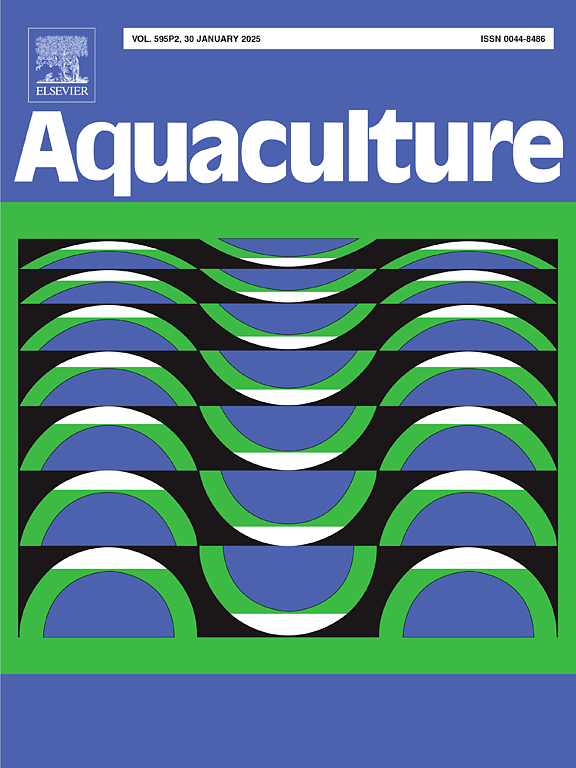Blue light-enhanced Desmodesmus sp. biomass yield in requirement opposite for high yields of macronutrient starvation-based lipid or nutritional excess-based pigment using red light
IF 3.9
1区 农林科学
Q1 FISHERIES
引用次数: 0
Abstract
The present work has aimed to optimize the amounts of lipids, carotenoids, and chlorophylls yielded by microalga Desmodesmus sp. in photobioreactors, performing suitable changes in nutritional and colored light source conditions. The enhancement of byproduct yields was also addressed, based on white and colored lights. 16-day algal growth kinetic tests were performed, testing white, blue, red, and green lights. Based on the Response Surface Methodology (RSM), a 32-factorial design was applied, combining suitable changes in concentration factors of both primary nutrients K2HPO4 and NaNO3. A significant improvement in the production of carotenoids, chlorophylls, and lipids in a red-light-based illuminance was observed. Finally, increasing the amounts of K2HPO4 and NaNO3 in a red light environment allowed the attainment of the highest yields of carotenoids and chlorophylls, in contrast with a high yield of lipids due to applying nutritional stress with an amount decrease of K2HPO4 and NaNO3.

蓝光提高了桥丝茅的生物量产量,而红光则提高了基于饥饿的巨量营养素脂质或基于营养过剩的色素的产量
本研究旨在优化微藻在光生物反应器中产生的脂质、类胡萝卜素和叶绿素的数量,并在营养和有色光源条件下进行适当的改变。基于白光和彩色光,还解决了副产品产量的提高问题。进行16天藻类生长动力学试验,检测白、蓝、红、绿四种光。基于响应面法(Response Surface Methodology, RSM),采用32因子设计,结合主要营养成分K2HPO4和NaNO3浓度因子的适宜变化。在红光照射下观察到类胡萝卜素、叶绿素和脂质的显著改善。最后,在红光环境下增加K2HPO4和NaNO3的量可以获得最高的类胡萝卜素和叶绿素产量,而在营养胁迫下减少K2HPO4和NaNO3的量可以获得较高的脂质产量。
本文章由计算机程序翻译,如有差异,请以英文原文为准。
求助全文
约1分钟内获得全文
求助全文
来源期刊

Aquaculture
农林科学-海洋与淡水生物学
CiteScore
8.60
自引率
17.80%
发文量
1246
审稿时长
56 days
期刊介绍:
Aquaculture is an international journal for the exploration, improvement and management of all freshwater and marine food resources. It publishes novel and innovative research of world-wide interest on farming of aquatic organisms, which includes finfish, mollusks, crustaceans and aquatic plants for human consumption. Research on ornamentals is not a focus of the Journal. Aquaculture only publishes papers with a clear relevance to improving aquaculture practices or a potential application.
 求助内容:
求助内容: 应助结果提醒方式:
应助结果提醒方式:


